Wondering How Long to Get Into Ketosis? Find Out Here
How Long Does It Take to Get Into Ketosis?
👉 It usually takes 2 to 4 days to get into ketosis if you keep your daily carb intake under 20–50 grams. However, the time can vary depending on your metabolism, activity level, and diet history. Exercising more and eating more healthy fats can help your body enter ketosis faster.
Curious about the keto diet and its weight loss benefits? You’ve probably heard of ketosis, the key metabolic state this plan targets!
If you’ve just started a low-carb or keto diet, you’re probably wondering how long to get into ketosis and start burning fat for fuel. The truth is, everyone’s body is different. Some people reach ketosis in just a couple of days, while others take a little longer.
Reaching ketosis forces your body to switch its main source of fuel from carbs to fat, which can lead to significant health benefits. The keto diet facilitates this transition, offering benefits such as weight loss and enhanced metabolic health.
You can confirm ketosis by measuring ketone levels via urine, breath, or blood tests. While it has health benefits, be mindful of potential side effects. Strategies like intermittent fasting and increasing healthy fat intake can help you enter ketosis faster.
This guide is your go-to resource for starting ketosis! It covers all the essentials, including the best foods to eat and tips for tracking your progress. Let’s dive in and get you on the path to a successful ketogenic lifestyle!

Table of Contents
- Understanding Ketosis and Its Role in the Body
- Factors Affecting How Long to Get into Ketosis
- Steps on How to Get into Ketosis Quickly
- Using Intermittent Fasting to Enter Ketosis
- Foods to Eat and Avoid for Ketosis
- How to Track Progress and Recognize Ketosis
- Frequently Asked Questions
- Final Thoughts
Understanding Ketosis and Its Role in the Body
Ketosis is a natural metabolic state where the body burns fat for energy instead of glucose when glucose is low. Ketones generated by this process act as an energy source for both the body and the brain.
Understanding how your metabolism adapts can make the journey into ketosis much smoother. The shift from using glucose to ketones is a major change for your body, but it can unlock several health advantages.
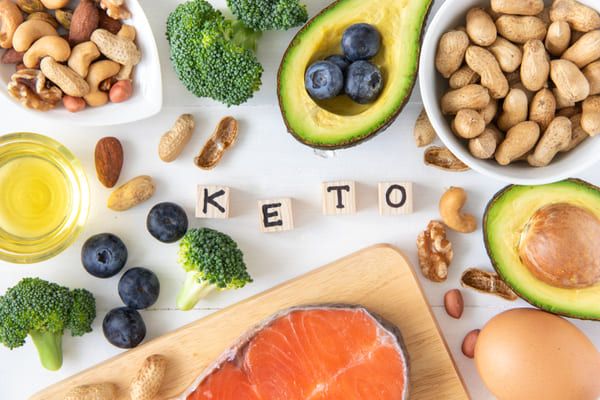
What Is Ketosis?
Ketosis is a metabolic condition that arises when carbohydrate consumption drops sharply, restricting the body’s glucose availability. As a result, the body switches to efficiently using fat as its primary energy source instead of relying on carbohydrates.
To compensate, your body first uses up its stored glucose, known as glycogen stores. Once these stores are depleted, your liver begins to break down fats into molecules called ketones. These ketones then become the primary fuel for your body and brain.
Ketosis occurs when the body switches from using glucose to ketones for energy. This state can lead to weight loss, better blood sugar control, and improved mental clarity for some people. It’s the body’s adaptation to a low-carb diet.
How Ketosis Supports Metabolic Health
Ketosis can significantly improve metabolic health. Many find it effective for weight loss, as the body burns its own fat for energy, particularly beneficial for those with obesity.
Furthermore, ketosis can be beneficial for individuals dealing with metabolic syndrome or insulin resistance. By limiting carbohydrates, the ketogenic diet can lead to significant reductions in blood sugar and insulin levels. One study even found that a keto diet improved insulin sensitivity by an impressive 75%.
The keto diet is often recommended for type 2 diabetes or prediabetes because it improves blood sugar control. By reducing excess fat and increasing insulin sensitivity, ketosis can lead to significant health benefits.
Factors Affecting How Long to Get into Ketosis
How long does it take to get into ketosis? Generally, you can expect to enter ketosis in about 2–4 days, but it can vary from person to person. For some, it might take a week or even longer.
Several factors influence how quickly you make the switch. Your body’s unique metabolism and your previous carbohydrate intake play a significant role. Your age, activity level, and dietary choices are all part of the equation.
Let’s look at how individual differences in metabolism and your food choices can affect this process.

Individual Differences in Metabolism
Your metabolism greatly influences how quickly you reach ketosis. Factors like age, weight, and metabolic health vary by person. A high-carb diet before starting keto can delay ketosis, as your body needs more time to deplete glycogen stores.
Insulin sensitivity also affects the process. If your body is more sensitive to insulin, it might transition to using ketones for fuel more efficiently. In contrast, those with insulin resistance might find the transition takes a little more time.
Even your age can make a difference, as metabolism can change over the years. Some studies have shown that a keto diet can be highly effective for fat loss in older adults, but the initial adaptation period might vary.
Importance of Dietary Choices
Your diet is key to reaching ketosis. To enter this state, you must choose foods that shift your body from burning carbs to burning fat, focusing closely on macronutrient intake.
The foundation of the keto diet is a very low-carbohydrate intake. You also need to increase your consumption of healthy fats and maintain a moderate protein intake. Getting this balance right is key to signaling your body to start producing ketones.
To follow the keto diet, limit carbs to 20–50 grams per day, increase healthy fats to about 70% of daily calories, and keep protein intake moderate at around 20%.
Steps on How to Get into Ketosis Quickly
If you’re eager to start reaping the benefits of ketosis, you might be wondering how to speed up the process. The quickest way to get there is by being diligent with your diet and lifestyle from day one. Severely limiting your carb intake is the most important step.
You can speed up your transition by increasing physical activity and trying intermittent fasting, which helps deplete glycogen stores faster. Here are the most effective steps to enter ketosis quickly.

Reducing Carbohydrate Intake
The most effective way to enter ketosis is to drastically reduce your carbohydrate intake to 20–50 grams per day. This forces your body to use fat as its primary fuel source.
For many people, tracking carb intake is essential, especially in the beginning. It’s easy to underestimate your consumption, as carbs can be hidden in sauces, condiments, and processed foods. Sticking to the lower end of the carb range can help you enter ketosis faster.
To reduce your intake, eliminate or strictly limit sugary foods (soda, candy, cake), grains and starches (bread, pasta, rice), most fruits except small amounts of berries, and root vegetables like potatoes and carrots.
Increasing Healthy Fat Consumption
When cutting carbs, increase healthy fats to about 70% of calories on a keto diet. This fuels ketone production and maintains energy.
Prioritize high-quality fats for better health. Great options include olive oil, avocados, nuts, and fatty fish. MCT oil can also aid in reaching ketosis, even with higher carb or protein intake.
Some great sources of healthy fats to include in your diet are extra virgin olive oil, avocado oil, and coconut oil. Fatty fish such as salmon, mackerel, trout, and tuna are also excellent options.
You can add nuts and seeds like almonds, walnuts, flaxseeds, and chia seeds for additional healthy fats. Other beneficial sources include avocados, full-fat dairy, eggs, and grass-fed butter.
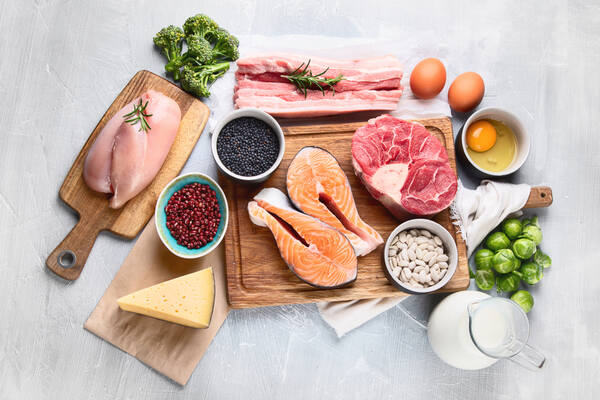
Finding the Right Protein Balance
Protein is essential on a keto diet, but balance is key. Enough preserves muscle and health; too much can disrupt ketosis by converting to glucose. Find the right intake to maintain ketosis.
The goal is to consume a moderate amount. For most people, protein should make up about 20% of their total daily calories. A high-protein ketogenic diet might go up to 35%, but the standard version is typically lower.
A general guideline is to consume about 1 gram of protein per pound of your body weight daily, though this can vary. If you are very physically active, you might need slightly more, perhaps up to 1.5 grams per pound.
Avoid restricting protein too much, as it can cause muscle loss, but don’t overconsume either. Too much protein can hinder fat-burning and prevent ketosis.
If you’re not reaching ketosis after cutting carbs, your protein intake may be too high. Tracking your intake for a few weeks helps you find the right balance to maintain ketosis and support your body’s needs.
Using Intermittent Fasting to Enter Ketosis
Intermittent fasting is another powerful tool you can use to enter ketosis more quickly. Fasting helps your body deplete its glycogen stores faster since you aren’t consuming any calories for a set period. This encourages your body to switch its fuel source from carbs to fat.
Pairing intermittent fasting with a keto diet can create a synergistic effect, accelerating your transition into a fat-burning state. Let’s explore the types of fasting that work well and the benefits of this combination.
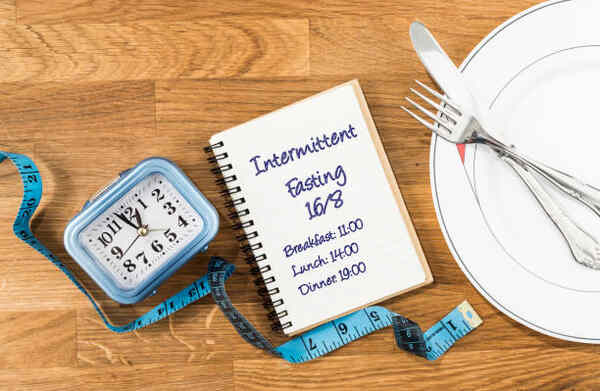
Types of Fasting That Promote Ketosis
Intermittent fasting has several forms, many of which help you reach ketosis faster. The most common method sets a daily eating window and fasts during the remaining hours, giving your body more time to burn stored energy.
Fasting works by forcing your body to use up its available glucose and glycogen. Once those are gone, it has no choice but to turn to fat for fuel, which leads to ketone production. This process effectively jump-starts ketosis.
Here are a few types of fasting that can support this process:
- 16/8 Method: This involves fasting for 16 hours and eating all your meals within an 8-hour window each day.
- 24-Hour Fasts: Some people choose to do a full 24-hour fast once or twice a week.
- Longer Fasts: In some controlled cases, a doctor might recommend fasts of 24–48 hours, but this is not necessary for most people.
Benefits of Pairing Fasting with the Keto Diet
Combining intermittent fasting with the keto diet enhances both benefits, accelerating fat loss and ketosis. Fasting depletes glycogen quickly, while keto prevents its replenishment, keeping your body in fat-burning mode.
This combination can also lead to greater improvements in insulin sensitivity and more stable blood sugar levels. Many people find that fasting helps control hunger and cravings, making it easier to stick to the strict dietary requirements of the keto diet.
Research shows intermittent fasting may offer health benefits beyond weight loss, like disease protection and improved metabolic health. Combining it with keto could enhance your results.
Foods to Eat and Avoid for Ketosis
Success on the keto diet hinges on knowing what to eat and what to avoid. Your goal is to build your meals around healthy fats and protein while keeping your carb intake extremely low to stay in ketosis.
Choosing the right foods may seem tough at first, but with practice, it becomes easy. Focus on whole, single-ingredient foods. Here are the best options for keto and those to avoid.
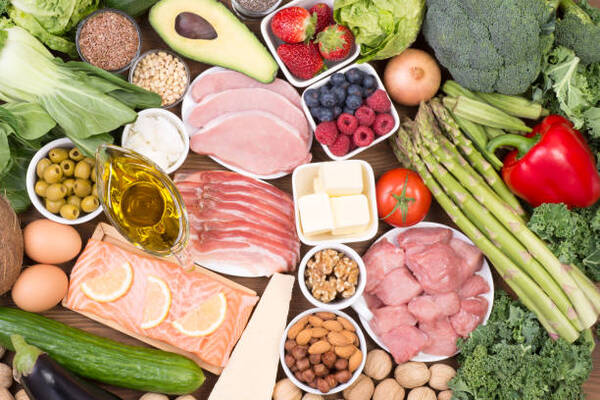
Recommended Keto-Friendly Foods
Build most meals around whole, nutrient-rich foods to get essential vitamins and minerals while staying in ketosis. Choose healthy fats, moderate protein, and low-carb vegetables for your shopping list.
Think of foods like meat, fatty fish, and eggs as staples. Healthy fats from sources like avocados and olive oil are also essential.
While most fruits are too high in sugar, small portions of berries are generally acceptable. Including medium-chain triglycerides (MCTs) from coconut oil can also be beneficial.
Here are some recommended keto-friendly foods:
- Meats: Red meat, chicken, turkey, bacon, and sausage.
- Fatty Fish: Salmon, trout, tuna, and mackerel.
- Eggs: Pastured or omega-3 whole eggs.
- Healthy Fats: Extra virgin olive oil, avocado oil, and avocados.
- Low-Carb Veggies: Green veggies, tomatoes, onions, and peppers.
- Nuts, Seeds, and Berries: Almonds, walnuts, and small portions of berries.
Foods That Slow or Prevent Ketosis
Any food high in carbs will replenish your glycogen stores and kick you out of ketosis. This includes obvious culprits like sugars and starches, but also some less obvious sources.
Read labels carefully—many processed foods, sauces, and condiments contain hidden sugars and carbs. Even “diet” or “low-fat” products may be high in carbohydrates. Choosing whole foods helps you avoid these pitfalls.
Here are the main food groups to eliminate or drastically reduce on a keto diet:
- Sugary Foods: Soda, fruit juice, smoothies, cake, ice cream, and candy.
- Grains and Starches: Wheat-based products, rice, pasta, and cereal.
- Most Fruits: All fruits except small portions of berries.
- Beans and Legumes: Peas, kidney beans, lentils, and chickpeas.
- Root Vegetables: Potatoes, sweet potatoes, and carrots.
How to Track Progress and Recognize Ketosis
How do you know if your efforts are paying off and you’re actually in ketosis? Two primary ways to track your progress are to measure your ketone levels with special tools and recognize the physical signs your body gives you during the transition.
While physical symptoms can be a good indicator, the most accurate way to confirm ketosis is by measuring ketones in your urine, breath, and blood.
Let’s explore how to measure your levels accurately and what physical signs to look for.
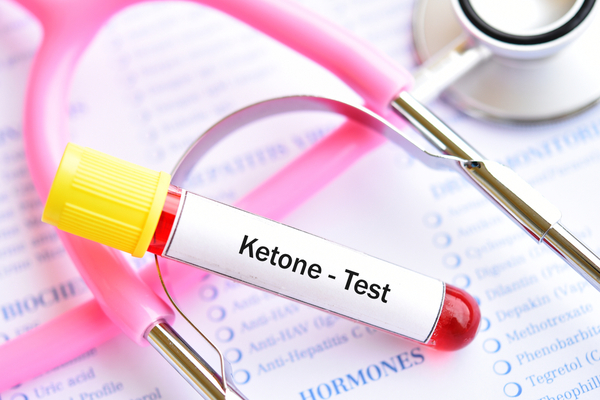
Measuring Ketone Levels Accurately
Testing your ketone levels is the best way to know for sure if you’re in ketosis. This allows you to see if your diet needs adjustments and helps you track your progress. There are three main types of ketones you can measure.
You can measure acetoacetate in your urine, acetone on your breath, and beta-hydroxybutyrate in your blood. Each method has its own tools and level of accuracy. A nutritional ketosis range is generally considered to be 0.5 to 3.0 mg/dL on a blood meter.
Here are the common ways to measure ketones:
- Ketone Urine Strips: These test strips change color based on ketone levels in your urine. They are cheap and easy to use but can be less accurate over time.
- Ketone Breath Meter: A ketone breath meter measures acetone levels in your breath. Studies show they are fairly accurate compared to urine tests.
- Blood Ketone Meter: This tool measures beta-hydroxybutyrate in your blood. It is the most accurate method but also the most expensive due to the cost of the strips.
Physical Signs Your Body Is in Ketosis
As your body adapts to using fat for fuel, you may notice several physical signs. Some of these are part of the initial transition period, often called the “keto flu,” while others are longer-term indicators that you’re in ketosis.
Initial symptoms can include headaches, fatigue, nausea, and increased thirst. Many people also experience what’s known as “keto breath,” which can have a fruity or metallic smell. This is caused by the excretion of acetone, a type of ketone. You may also experience digestive changes like constipation.
Once you adapt, you’ll notice more positive signs. These can include steady weight loss, decreased hunger, and, for some, improved mental function.
- Bad Breath: A fruity or acetone-like smell is a common sign.
- Weight Loss: Rapid initial water weight loss, followed by steady fat loss.
- Keto Flu Symptoms: Headaches, fatigue, and nausea are common in the first week.
- Decreased Appetite: Many people feel less hungry once in ketosis.
Frequently Asked Questions
Are There Side Effects When Transitioning Into Ketosis?
Yes, some people experience temporary side effects such as headaches, fatigue, nausea, and constipation. These typically last for a few days as your body adapts to using fat for fuel instead of carbs. Stay hydrated and get enough electrolytes to help minimize these effects.
How Do I Know if I am Not Achieving Ketosis?
If you’re not experiencing any signs of ketosis or if tests show low ketone levels, you may not be in ketosis. The most common reason is consuming too many carbs. Try tracking your carb intake carefully. You can also use urine strips, a breath meter, or a blood ketone meter to check your levels.
Is Ketosis Safe for Everyone?
Ketosis is generally safe for most healthy people, but not for everyone. Individuals with type 1 diabetes should avoid it due to the risk of diabetic ketoacidosis. People with liver failure, pancreatitis, or other specific health issues should also avoid it. It’s always best to consult a doctor before starting the keto diet.
Final Thoughts
Entering ketosis can greatly improve your metabolic health. To achieve ketosis, you need to watch what you eat and change some habits. It’s important to keep track of your progress and notice the signs that you’re in ketosis.
Getting into ketosis doesn’t happen overnight, but with consistency and the right habits, you’ll get there before you know it. Focus on keeping carbs low, staying hydrated, and fueling up with healthy fats.
Once you’re in ketosis, you’ll start feeling the benefits of steady energy and faster fat burning. If you’re interested in learning more about the ketogenic lifestyle, feel free to ask for additional information!

